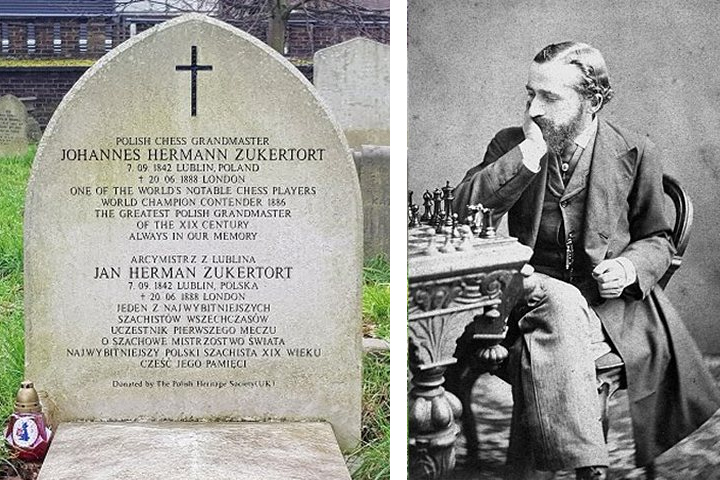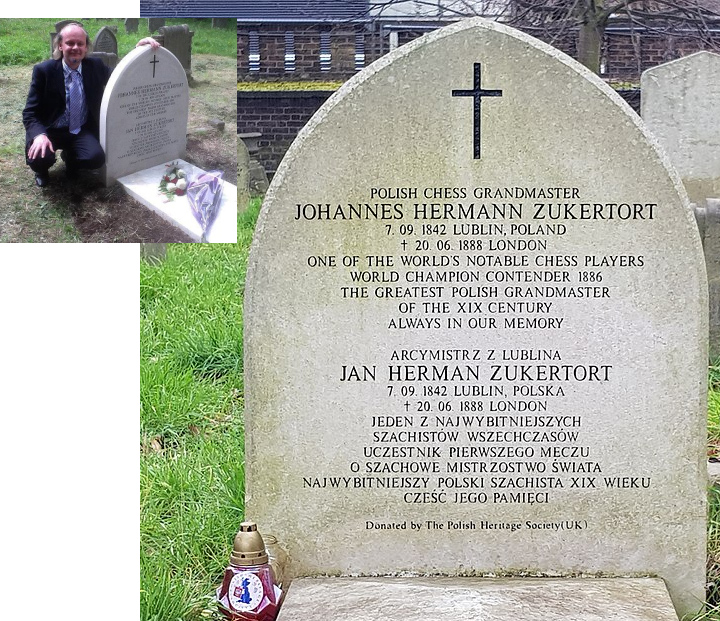


 In the 1880s, two people claimed to be the best chess player in the world: Willhelm Steinitz and Johannes Zukertort (picture). A competition for the "World Chess Championship" had to decide this dispute. For this reason the first world championship match was staged, and Wilhelm Steinitz emerged as the first world champion in history.
In the 1880s, two people claimed to be the best chess player in the world: Willhelm Steinitz and Johannes Zukertort (picture). A competition for the "World Chess Championship" had to decide this dispute. For this reason the first world championship match was staged, and Wilhelm Steinitz emerged as the first world champion in history.
Zukertort became seriously ill, probably during the match, and died two years later, on 20 June 1888 in London, at the age of only 45. He was buried in London's Brompton Cemetery.
After a few years, his grave was no longer maintained and eventually the site fell into oblivion. In 2011, however, Stuart Conquest set out to find it. And he succeeded.

In his current Zeit column, Helmut Pfleger reports on how the English grandmaster found Zukertort's grave. He writes:
I was recently in London, where the English chess grandmaster Stuart Conquest showed me the grave of Johannes Hermann Zukertort (1842-1888) in Brompton Cemetery.
Zukertort, along with Wilhelm Steinitz, was the best player in the world at his time, a fact impressively underlined by his triumphant victory in the great London Tournament of 1883, which he won by three points over Steinitz. But in the first official World Championship Match in the history of chess, staged in 1886 in New York, St. Louis and New Orleans, the brilliant but psychologically highly unstable Zukertort completely collapsed towards the end and lost 10:5. At his death on 20 June 1888 in London, his health and mentally stability were completely shattered, and chess-wise he was only "a shadow of his former self" (Tarrasch).
Stuart wanted to visit his grave, but it could no longer be discovered, as was the fate of many great minds. Finally, the "supervisor" allowed him to dig at the suspected, totally overgrown spot. It was a hot Good Friday 2011 when Stuart, drenched in sweat, was delighted to finally discovered the gravestone with the inscription in English and Polish.
Less drenched in sweat, but certainly also delighted, you can now (re)discover the romantic mate combination of Zukertort as White against his former teacher Adolf Anderssen in Breslau in 1865. How did it happen?
You can move the pieces on the board and try to find how White mated in three moves.
| Advertising |